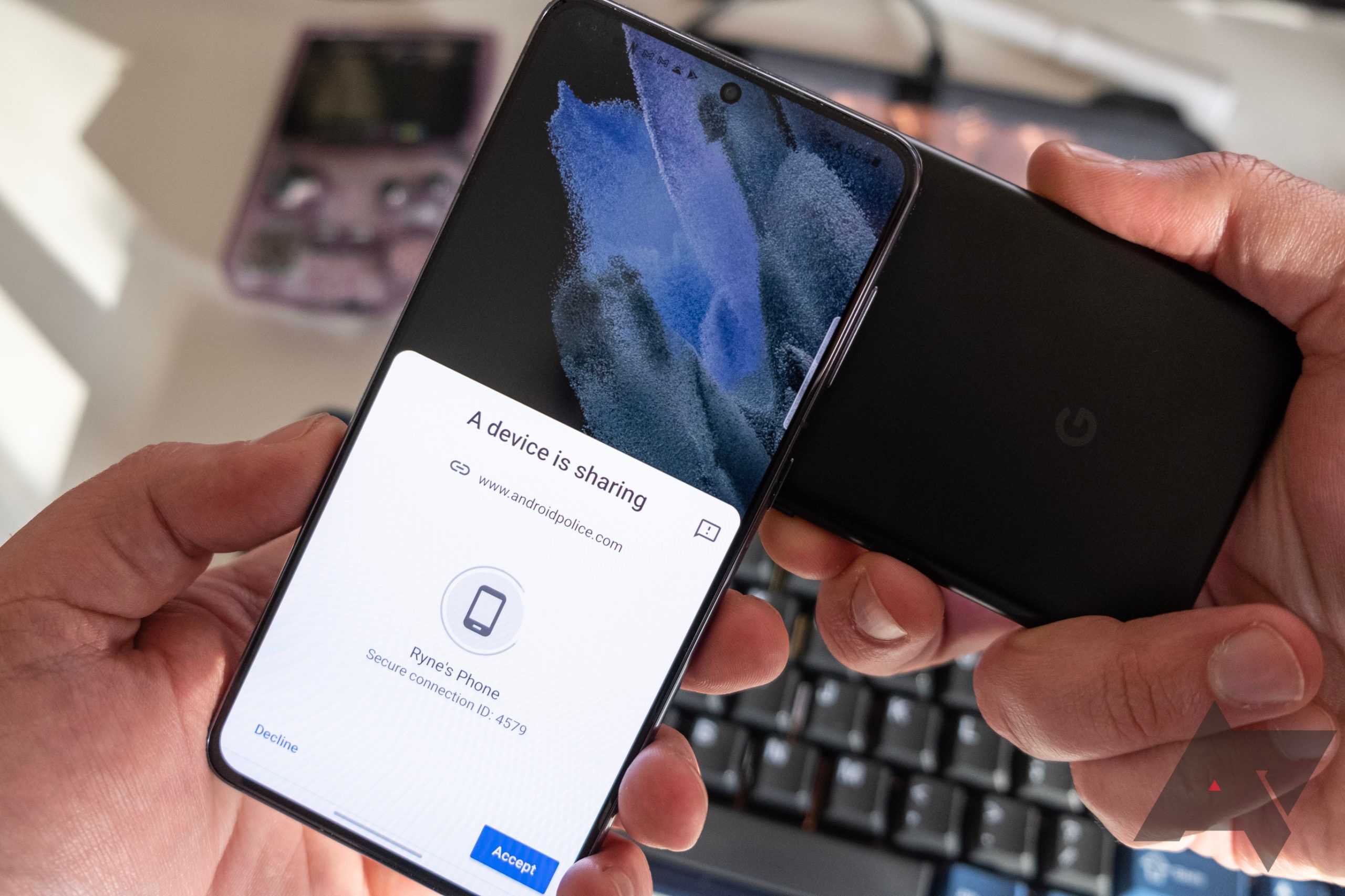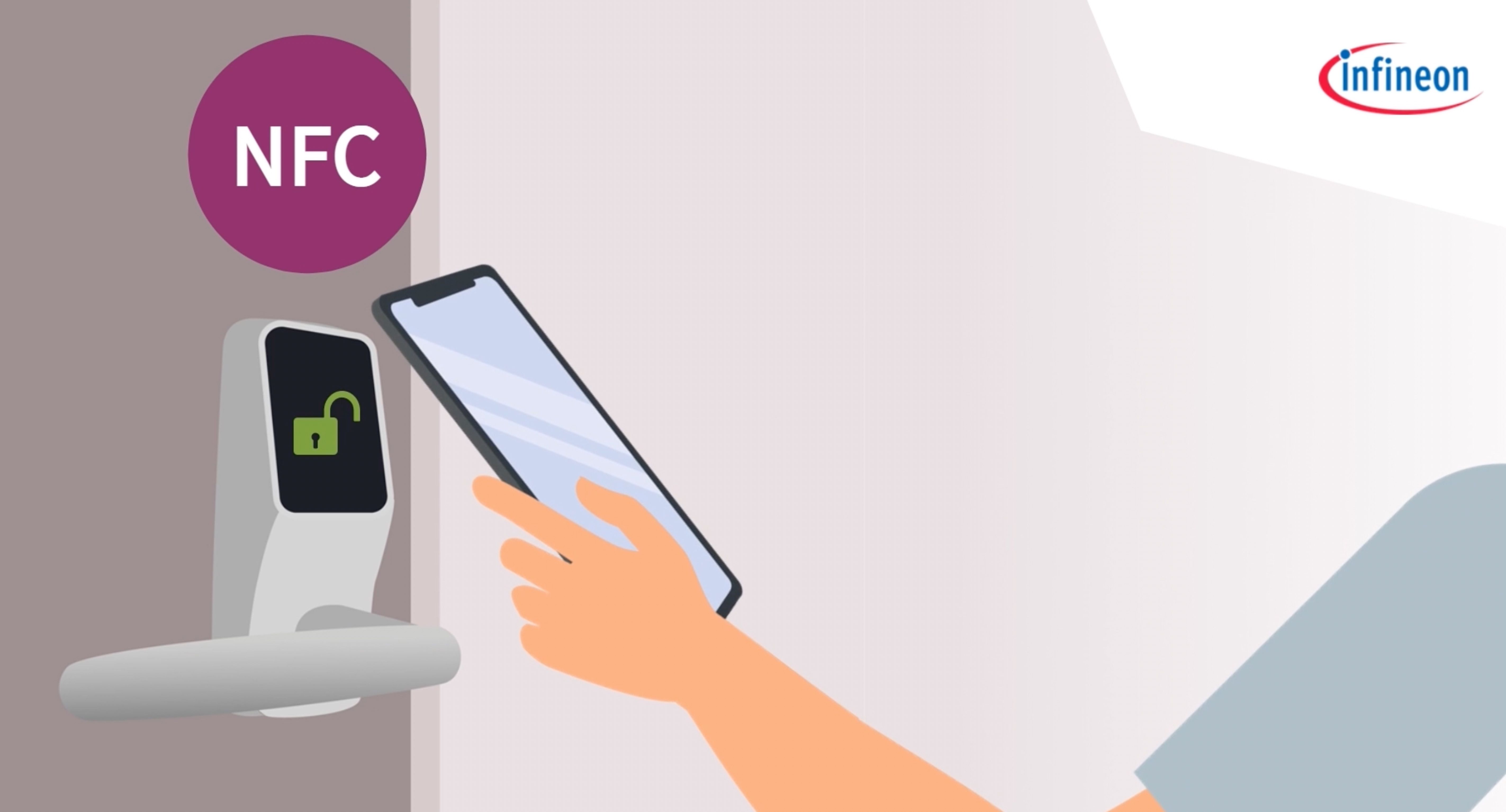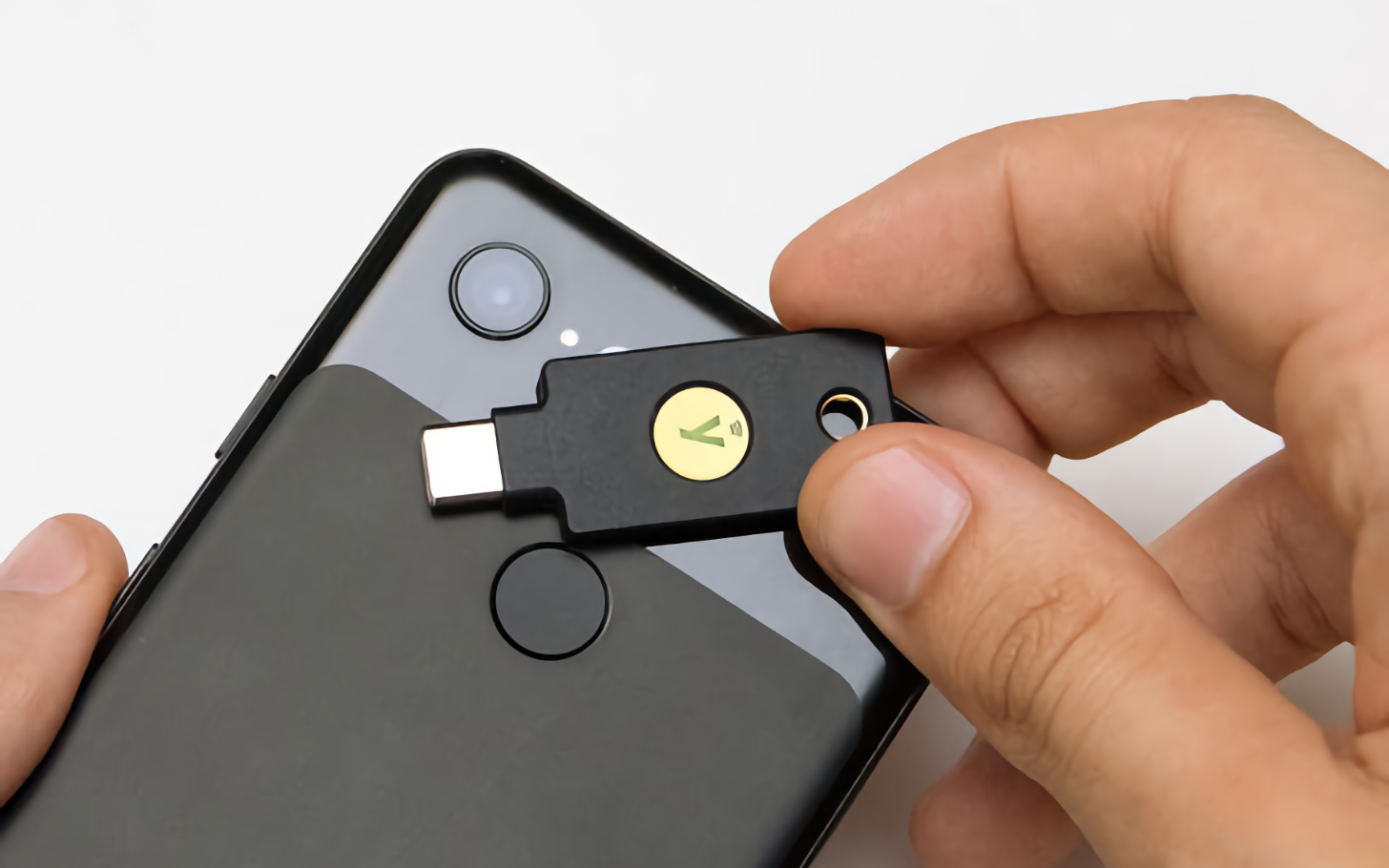NFC, or near-field communication, has been a common acronym on tech devices for years. NFC technology, often denoted by an “N” logo, has become a critical part of our smartphones and smartwatches. You’ll also find NFC on smart speakers, tablets, and gaming devices like Nintendo Switch. NFC silently works in the background and allows contactless payments via Google Wallet, Samsung Wallet, or Apple Pay. Before we go over its use cases, let’s learn more about this proximity-based wireless communication standard.
The basics of NFC
NFC is a wireless communication technology that allows devices to automatically link and talk to each other when in close proximity. It has a short range (around 4 inches) and works best when devices are only an inch or two away from each other. NFC tech comes in various forms but is known for its simplicity, ease of use, and affordability.
NFC was launched in the early 2000s, and it’s built upon RFID (radio frequency identification). It uses a radio frequency ISM band of 13.56 MHz to facilitate communication and data sharing.
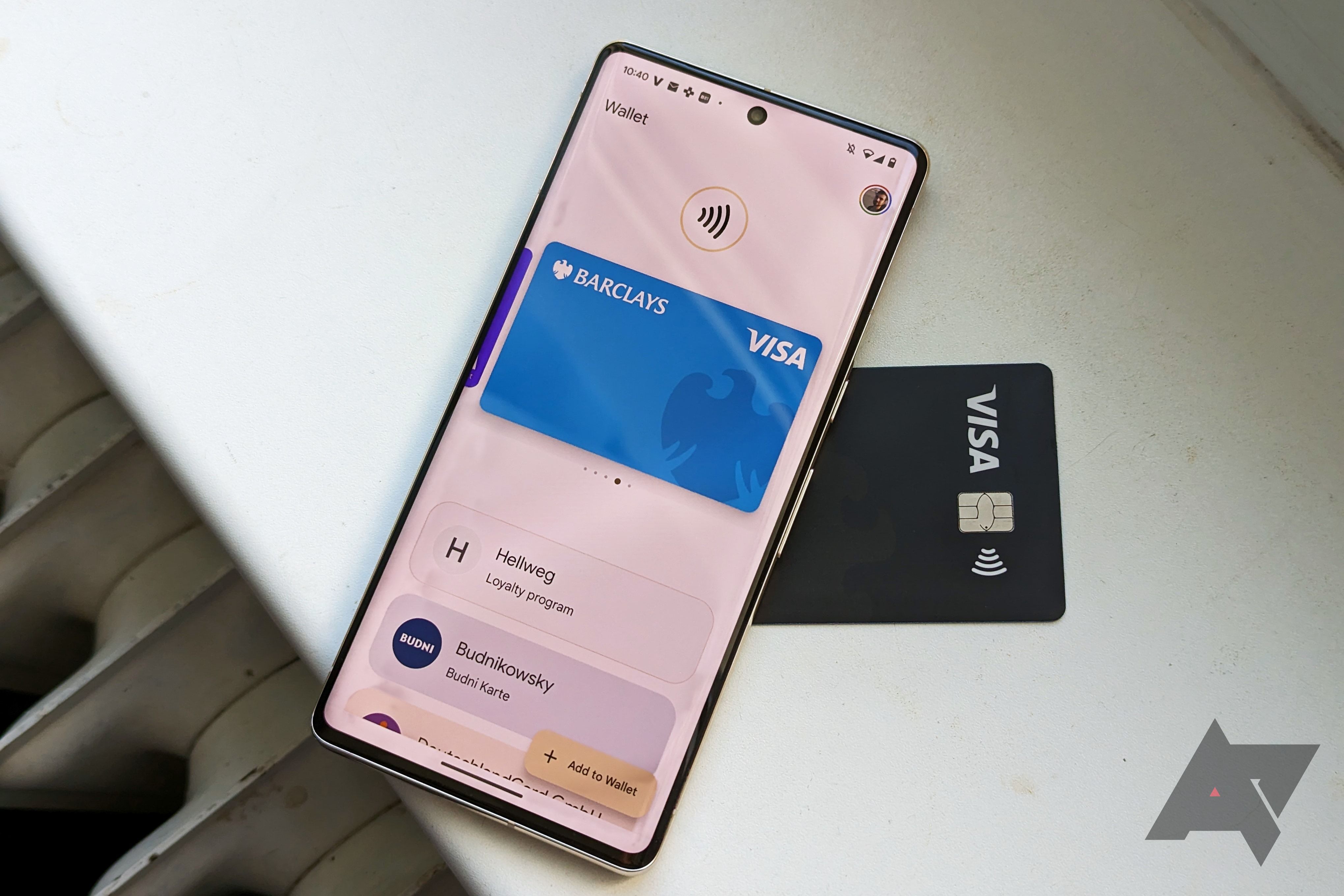
How to add and remove credit cards to Google Wallet
Add or remove credit cards in seconds
Let’s take contactless payment as an example here. When you launch Google Wallet on your phone and place it near an NFC reader, an electric current passes through a coil to generate a magnetic field. It detects the coil on the point-of-sale system and passes encrypted information to complete the payment in no time.
Active vs. passive NFC
NFC tech can be either active or passive. Active NFC technology can send and receive data but requires a power source and additional hardware. Passive NFC technology, usually found in NFC tags, consists of simple coils with a microchip that doesn’t need power but can send information to active NFC sources. Active and passive NFC technology often work together.
Do Android phones have NFC?
Usually, yes. Mobile devices of all kinds come with NFC technology, and it’s been a common feature for years. Some phones, like Samsung phones, may indicate NFC technology with a small logo. Phones may also have an NFC section in the settings where you can turn the feature on or off.
It isn’t limited to Android. iPhones, tablets, smartwatches, and laptops come with the technology. But don’t confuse NFC technology with specific applications, like the now-defunct Android Beam.
Most Android phone manufacturers activate NFC by default and let you pick the default app to process payments on the go.
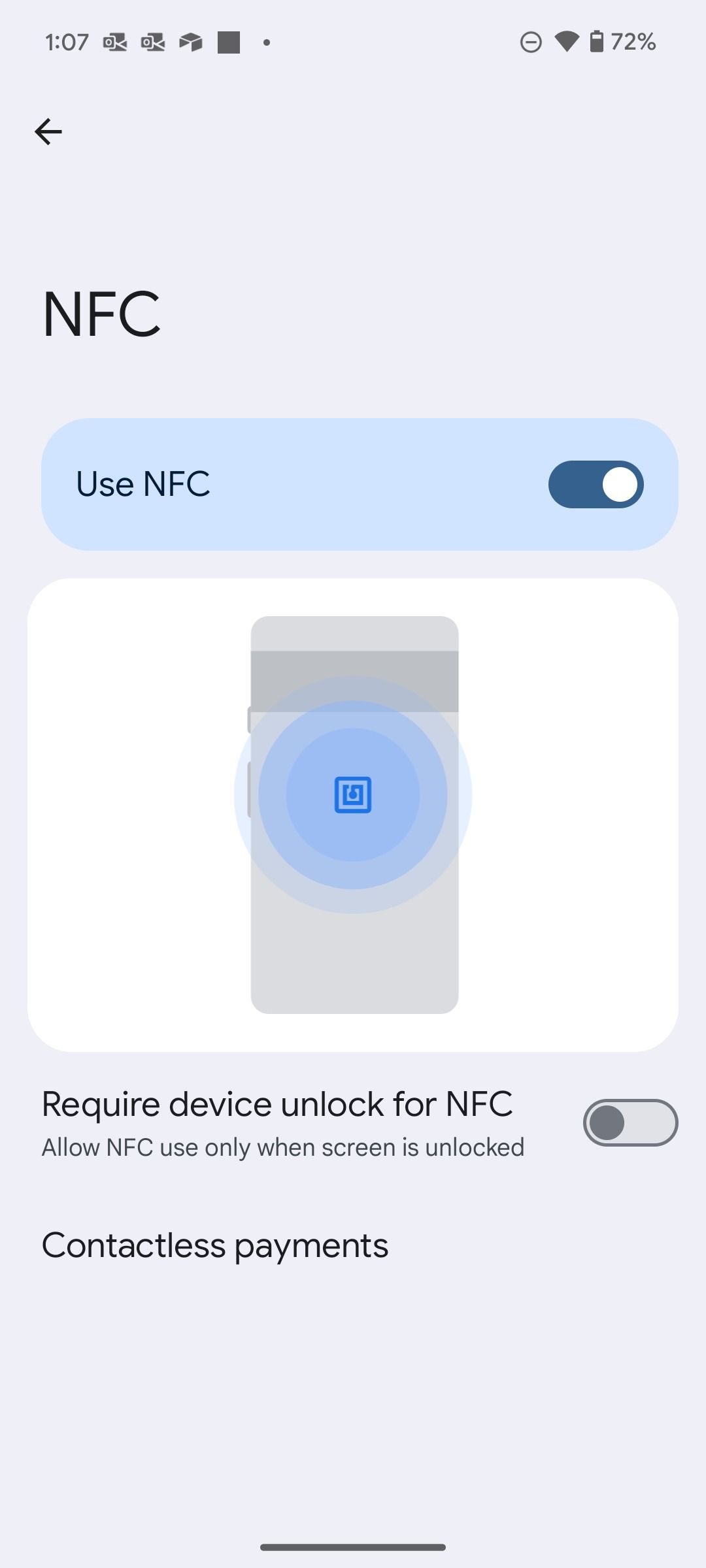
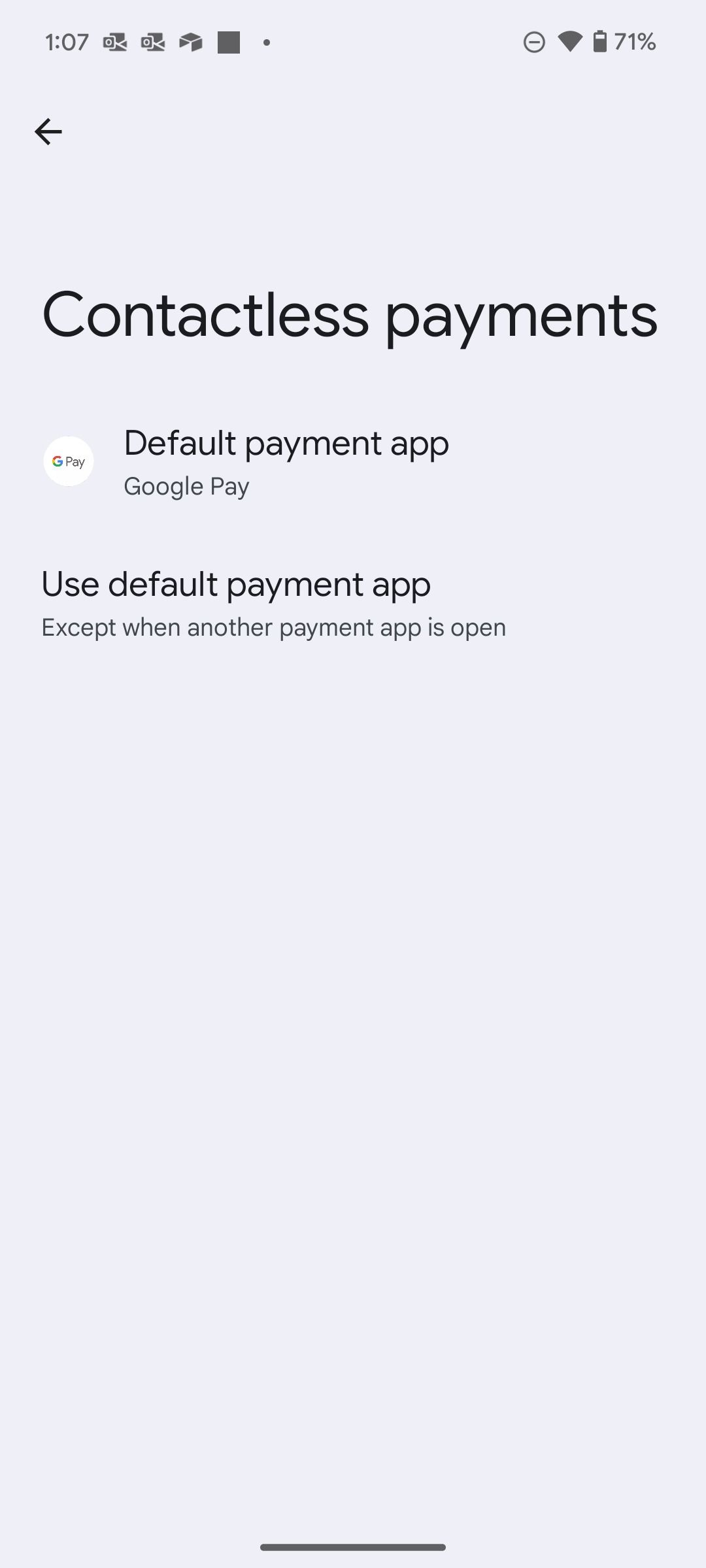
Google toyed with the idea of sharing data with NFC-powered Android Beam. The feature never gained traction among consumers due to NFC’s range limitation and slow transfer speeds. Later, the software giant replaced it with Fast Share (rebranded to Quick Share), which leverages Wi-Fi and Bluetooth for fast data transfer speeds within a respectable range.
Why is NFC important?
The way NFC transmits data is secure, and the limited range means your device won’t make unwanted contact with NFC-compatible hardware. That makes it ideal for quick scans to exchange important data. When you see a swiping feature where users can pass their phone over a device to complete a process, it probably uses NFC technology.
NFC works well and is popular because it’s relatively easy to include in the manufacturing process. It can be added to all kinds of existing technology or things we carry around, like cards. The automation combined with frequently-used devices like card readers makes it convenient. It also uses little (or no) battery life.

Google Wallet not working? Here are a few quick fixes
Trouble with the tap? Here’s how you can fix your payment problems
How is NFC used?
You can find NFC technology at work in many industries. Some of the most common examples include the following.
Contactless mobile payments
You can swipe your phone to use Apple Pay, Google Pay, or Samsung Pay, for example, as enabled by Square and a variety of other transaction brands. Many credit or debit cards include NFC tags for similar benefits. You can find this technology at point-of-sale systems, in public transportation, and at venues for authentication and payments.
On Android, banking apps can access NFC hardware on your device to offer their mobile payment services. Apple limits NFC-powered mobile payments to Apple Pay only.
Quick data transfers
Phones may be able to share contact information, URLs, or other types of data with a simple tap or by passing phones near each other. NFC isn’t an ideal method to transfer large files. Instead, use Quick Share (Android) or AirDrop (iPhone) to exchange media files. Besides, holding your phones at close range isn’t convenient for a long time.
Tracking items
Valuable or important items may include NFC tags so that they can be scanned and identified. This tracks shipments accurately, with more capabilities than RFID, or Radio-Frequency Identification, identify stolen items, and more.
Gaming
While NFC doesn’t have a lot of gaming applications, there’s one big one: Nintendo’s Amiibos, action figures that come with NFC technology that can link profiles and let gamers carry a little bit of their character information around.
Setting up other devices
If you’re unboxing a router, smart speaker, or another consumer device for the first time, you’ll likely find instructions to use an NFC link to connect your phone and set up devices. It saves time compared to something like a QR code.
NFC only plays a role during device setup. It speeds up the pairing process via Bluetooth or Wi-Fi. You can tap your smartphone on a new item’s NFC chip and pair it automatically. Your phone doesn’t connect to compatible accessories via NFC. Your phone reverts to Bluetooth or Wi-Fi to communicate with the accessory.
Unlock your home or hotel
Smart devices, like smart locks, can be controlled more securely than Bluetooth. NFC stores a digital key to unlock your office, home, or hotel. You need to use one of the compatible smart locks, though. At supported hotel chains, you receive your digital key on your phone, removing the hassle of approaching the front desk.
Public transport
NFC-based cards have become a norm in public transport in major cities like London, Hong Kong, Singapore, and more. You can also add these cards to Google Wallet or Samsung Wallet and pay for your tickets on the go.
Digital car key
The Android Digital Car key and iOS Car Key let you lock and unlock your car within the range. Only a few car manufacturers support a digital car key via NFC. It may take some time for car OEMs to implement the functionality in their offerings. Check a separate guide to learn more about Android Digital Car Key.
Does NFC have any downsides or privacy issues?
Source: Infineon
NFC is limited to short-range connections and can only handle small amounts of data. You can’t use it for any type of streaming like Bluetooth or internet connections such as Wi-Fi. It’s good at what it does, but its scope is limited.
Privacy and security are more complex issues. NFC’s limitations also make it safer to use than other wireless technologies. Plus, data can be encrypted before it’s transferred via NFC payment, which is what most mobile wallets do, so even if data is picked up via eavesdropping hacks, it doesn’t do any good.
There are concerns about hackers using near-range readers to pick up NFC chip information without the owner’s consent. For example, someone may be able to bump into you in a crowd and scan one of your NFC credit cards in your pocket or upload a malware link onto your phone.
In practice, we don’t see this happening much. Hackers need to know where your wallet or phone is at a glance and need to linger near your pocket long enough to establish an NFC connection. This isn’t an ideal way to steal data. But theoretically, it could be a problem because of NFC’s automatic nature.
If you’re worried about NFC hacking, turn off the most active NFC features with settings on your phone.
Where is NFC headed in the future?
Source: YubiKey
Most obvious applications of NFC-activated devices are already in use, like payment terminals. But since everyone carries an NFC reader, brands are watching for more possible uses, especially if it helps them stand out from the competition. That includes:
- Interactive store displays and automatic ordering in brick-and-mortar establishments.
- Linking maps or guides in tourist locations.
- Confirming identities at forums or in schools.
- UV sensors that tell you when to stop tanning.
- More remote control in smart devices, like swiping your smartwatch at a light switch to turn on lights.
Now you’re NFC-ready
The next time you swipe to pay with a digital wallet or card, you’ll know the technology at work behind the feature. NFC is a close-range wireless technology that allows several functionalities on your device. Manufacturers are looking at implementing UWB (ultra wide-band), which is said to be a successor of NFC in the future. Check our dedicated guide to learn more about the new communication standard.
Source link

